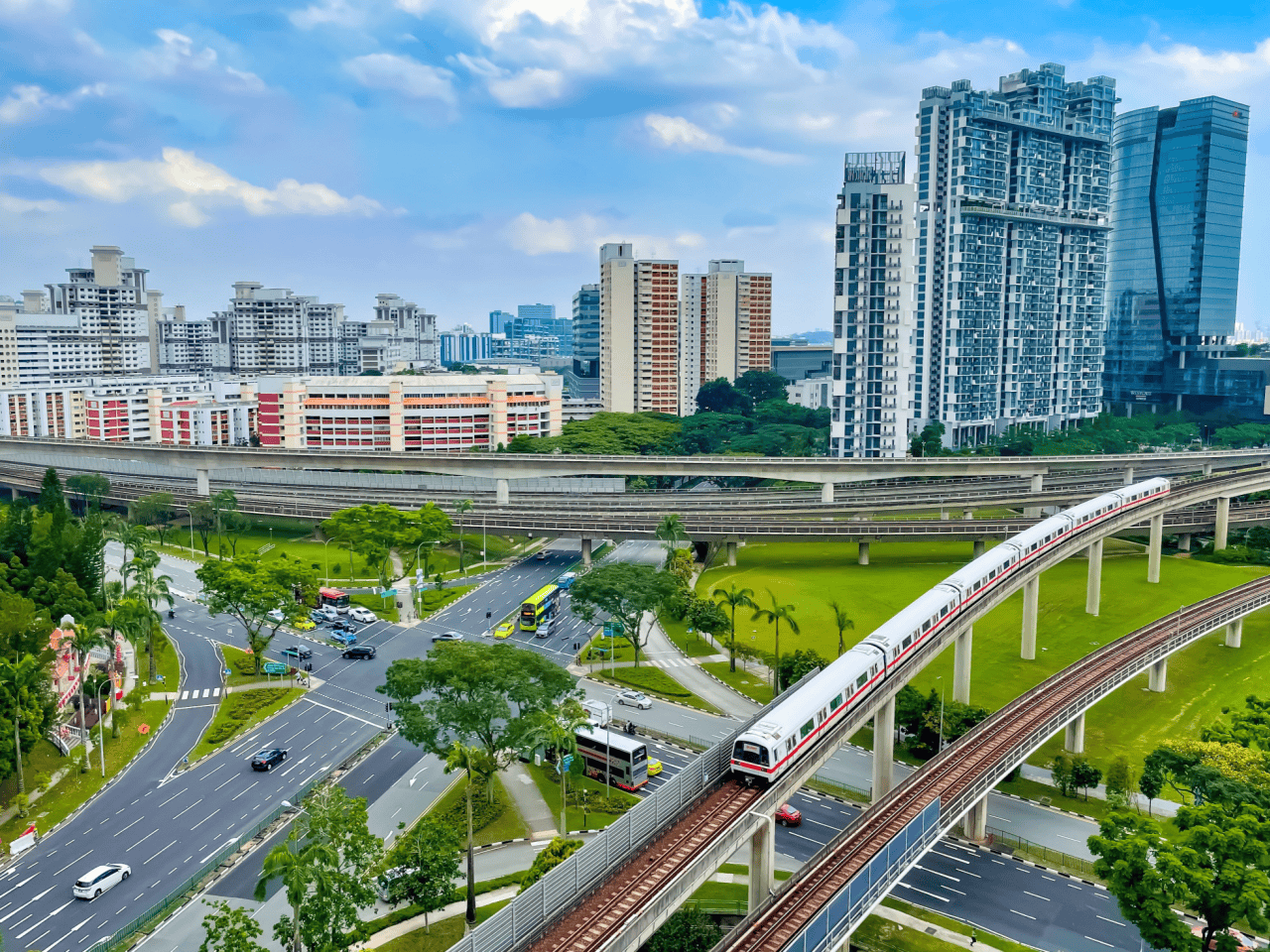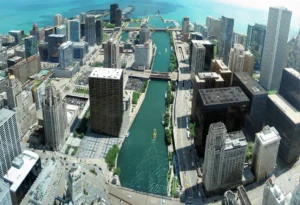
5 Best Emerging Trends in Multifamily Real Estate
In multifamily real estate, you’ll find five emerging trends reshaping the landscape. Technology-driven amenities like smartphone apps and IP video intercoms enhance convenience and security. Sustainable living features, including energy-efficient appliances and green spaces, meet growing environmental demands and attract premium rents.
Urban and transit proximity increases property desirability due to easy access to jobs and services. Flexible workspaces integrated into properties support remote work needs and increase tenant retention. Lastly, community-oriented designs with shared spaces foster social interaction and a sense of belonging. For a deeper insight into these transformative trends, explore further.
Key Takeaways
- Technology-driven amenities like Proptech and smartphone apps enhance resident convenience and security.
- Sustainable living features such as energy-efficient appliances and green spaces attract eco-conscious tenants.
- Proximity to urban centers and transit hubs increases property demand and tenant convenience.
- Flexible workspaces with high-speed wifi and co-working areas support remote work and tenant satisfaction.
- Community-oriented designs with shared spaces and events foster resident interaction and a sense of belonging.
Technology-Driven Amenities
In today’s multifamily real estate market, incorporating technology-driven amenities has become an essential factor for meeting modern tenant expectations. Property technology, or ‘proptech,’ is no longer a luxury but a standard. Smartphone apps are at the forefront of this transformation, offering residents seamless access to amenities, services, and communication channels within their communities.
Data indicates that tenants now expect the convenience of using smartphone apps for tasks such as booking communal spaces, submitting maintenance requests, and receiving real-time updates from property management. This integration not only enhances tenant satisfaction but also streamlines property management operations, making it a win-win scenario.
Another critical technology-driven amenity gaining traction is the use of IP Video intercoms. These systems notably elevate the security and convenience for residents by allowing them to manage visitor access directly from their smartphones. A survey shows that properties equipped with IP Video intercoms experience higher tenant retention rates due to the added layer of security and ease of use.
Moreover, technology-driven amenities extend to smart home controls and high-speed internet connectivity, which are becoming essential for modern living. Tenants value the freedom that comes with controlling their living environment through their smartphones, whether it’s adjusting the thermostat, managing lighting, or ensuring their home is secure while they’re away.
Get a Free Multifamily Loan Quote
Access Non-Recourse, 10+ Year Fixed, 30-Year Amortization
Sustainable Living Features
As technology-driven amenities become standard, there’s a parallel surge in demand for sustainable living features in multifamily properties. More renters are prioritizing eco-friendly amenities, and multifamily housing developers are taking note. The market is seeing a growing interest in energy-efficient appliances, promoting both cost savings and environmental responsibility.
You’ll find that properties incorporating sustainable features aren’t just catering to preferences—they’re also reaping financial benefits. Energy-efficient appliances and sustainable building materials reduce utility costs, creating long-term savings.
For instance, LED lighting and low-flow water fixtures can notably cut energy and water usage. These cost benefits make such properties attractive to both renters and investors.
Green spaces are another critical component of this trend. Multifamily properties with well-maintained green areas offer residents a respite from urban life, contributing to their overall well-being. These spaces can also serve as community hubs, fostering social interaction and a sense of belonging.
Properties with gardens, rooftop green areas, and parks are becoming more popular as renters seek environmentally responsible living options.
The focus on sustainable living features also plays a significant role in property valuation. Properties that emphasize eco-friendly amenities and green spaces often experience higher occupancy rates and can command premium rents. Renters are willing to pay more for the benefits of a sustainable living environment, making it a key differentiator in the multifamily market.
Urban and Transit Proximity
Proximity to urban centers and transit hubs has become a pivotal factor driving demand in the multifamily real estate market. This trend isn’t just a fleeting preference; it’s backed by data showing that properties near public transportation options attract tenants who value convenience and connectivity. If you’re looking for a living experience that offers freedom and flexibility, these locations are ideal.
Multifamily developments in urban areas consistently report higher occupancy rates and increased rental demand. This isn’t surprising given the array of amenities city life offers, from restaurants and entertainment to employment opportunities. Urban living appeals to those who desire a vibrant, connected lifestyle without the hassle of long commutes or heavy reliance on personal vehicles.
Investing in properties with strong transit proximity is a strategic move that taps into the growing trend of sustainable living. Tenants today are increasingly eco-conscious, seeking ways to reduce their carbon footprint.
Being close to transit nodes means fewer car trips and a smaller environmental impact, aligning with sustainable living principles. The convenience of having public transportation at your doorstep also cannot be overstated—whether it’s for work, social engagements, or daily errands.
For you, as a potential tenant or investor, this trend means more than just a place to live. It’s about embracing a lifestyle that values freedom, convenience, and sustainability.
The data clearly shows that properties near urban centers and transit hubs don’t just meet these needs—they excel at it. If you’re aiming for a living situation that offers unparalleled access to city amenities and promotes sustainable living, focusing on urban and transit proximity should be your strategy.
Flexible Workspaces
Recognizing the surge in remote work, multifamily properties are increasingly incorporating flexible workspaces to meet tenant demands for convenient, tech-enabled environments. In catering to the growing remote work accommodations, properties now offer amenities such as private rooms, high-speed wifi, and co-working areas. These features are not just luxuries but essential components that greatly enhance tenant satisfaction and boost renewal rates.
The integration of technology plays a pivotal role in these flexible workspaces. Smart locks and digital controls provide seamless, secure access, ensuring that residents can focus on productivity without worrying about logistical hassles.
High-speed internet is a baseline requirement, but many properties go further by offering dedicated co-working spaces equipped with ergonomic furniture, multiple power outlets, and even soundproofed rooms for confidential meetings.
Data shows that these enhancements directly correlate with higher tenant retention. According to industry surveys, properties with advanced remote work facilities report up to a 20% increase in lease renewals. This trend underlines the importance of adapting to the evolving needs of remote workers, who value not just living space but also work-friendly environments.
Moreover, some multifamily properties are taking it a step further by offering subscription services for interactive fitness and community-building activities. These services cater to the holistic well-being of residents, making the property more than just a place to live but a community where they can thrive professionally and personally.
In essence, the drive to integrate flexible workspaces in multifamily housing is not merely a trend but a strategic response to a fundamental shift in how people work and live. By prioritizing remote work amenities, property managers can ensure high tenant satisfaction and foster a sense of freedom and flexibility that modern residents increasingly demand.
Community-Oriented Designs
Community-oriented designs in multifamily real estate greatly enhance resident satisfaction by creating shared spaces that foster social interaction and a sense of belonging. By focusing on fostering resident connections and enhancing the overall living experience, these designs help establish a vibrant and cohesive community.
Shared spaces like rooftop gardens, community lounges, and outdoor gathering areas are integral to these community-oriented designs. They provide residents with opportunities to engage with one another, creating an environment where social bonds can flourish. Data suggests that such interactions play a key role in a heightened sense of belonging and well-being among residents.
Amenities play an important role in these designs. Communal kitchens, game rooms, and co-working spaces are more than just conveniences; they are catalysts for fostering community. These amenities encourage residents to spend time together, be it cooking a meal, enjoying recreational activities, or collaborating on work projects. This interaction is essential in cultivating a sense of camaraderie and mutual support within the community.
Moreover, features like community events, fitness classes, and shared workspaces further enhance the communal living experience. Community events bring residents together for shared interests, while fitness classes promote health and well-being. Shared workspaces, on the other hand, offer a professional environment within the residential complex, blending work and living spaces seamlessly.
Frequently Asked Questions
What Is the Trend in Multifamily Investments?
You’ll find that the trend in multifamily investments heavily leans towards sustainable designs, co-living spaces, and smart technology. Investors prioritize properties with energy-efficient features and connectivity options. Data shows that modern tenants demand convenience and eco-friendly living, driving investment in these areas. Co-living spaces are growing in popularity, offering flexibility and community. Smart technology integration is also vital, enhancing property value and tenant satisfaction through advanced amenities.
What Is the Multifamily Market Outlook for 2024?
In 2024, you’ll see rental demand influenced by urban migration and economic factors. Vacancy rates are predicted to surpass 6%, while rent growth stays modest at 1-2%. Green building technologies will become more prevalent as developers aim for sustainability. With housing prices rising 3-4%, multifamily investments may offer stability. Data shows unit absorption trends positively, suggesting continued interest in multifamily living despite economic fluctuations.
What Is a Good Return on Investment Multifamily?
Did you know that multifamily properties can deliver rental yields of up to 8% annually? A good return on investment in multifamily real estate ranges between 6% to 8%. By leveraging debt financing, you can amplify your returns while enjoying tax benefits. These properties offer stable cash flow and long-term appreciation. Remember, understanding local markets and effective property management are essential to maximizing your ROI. Invest smartly for financial freedom.
What Is the Trend in the US Multifamily Cap Rate?
You’re likely wondering about the trend in US multifamily cap rates. Cap rate fluctuations have been notable, with primary markets like New York seeing yield compression due to high demand and property values. Investor sentiment remains strong, driven by market conditions and economic factors. Secondary and tertiary markets offer higher cap rates, attracting those seeking greater returns. Understanding these trends helps you make informed investment decisions in multifamily real estate.
Conclusion
To sum up, the multifamily real estate market is currently undergoing a revolution. By embracing technology-driven amenities, sustainable living features, urban and transit proximity, flexible workspaces, and community-oriented designs, developers are not just keeping up but setting the pace. These trends are no mere fads; they’re shaping the future of urban living. If you don’t adapt to these changes, you’ll be left in the dust. So, stay ahead by integrating these data-backed trends into your projects.
Source: Multifamily Mentor













 Accessibility
Accessibility